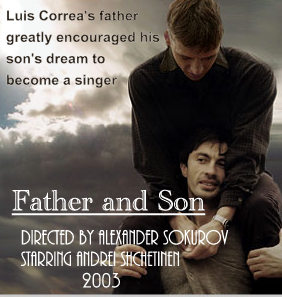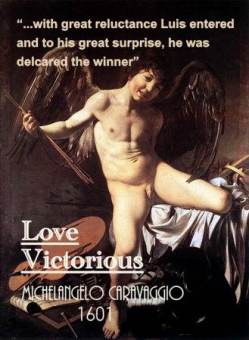1928, April2 – BIRTH OF LUIS CORREA
 Singer (Aries) – reflecting on a long and successful career, Luis Correa would recall with nostalgia, his father crouched around his radio listening to his favorite stars on Radio Belgrano…as a little boy he began to imitate those singers to the delight of his father whose secret wish was to have been a singer and so he greatly encourage his son…Luis Correa was born in the town of “El Trebol” (clover) near Santa Fe, Argentina to a struggling family…he began singing in the local bars and cafes for donations and little by little he began developing a name for himself…through one of his loyal fans, at the age of twenty two, he was able to get his first professional job in a second-rate club in Mar del Plata (the birth place of Astor Piazzolla) catering to the newly rising middle class tourist…the result, in the eyes of some, of Juan Peron’s revolutionary populist policys…eventually he was befriended by renown singer Oscar Alonso who encouraged him to enter Radio El Mundo’s famous “Ronda de Cantores” singing contest which proudly featured the Osvaldo Fresedo Orchestra…
Singer (Aries) – reflecting on a long and successful career, Luis Correa would recall with nostalgia, his father crouched around his radio listening to his favorite stars on Radio Belgrano…as a little boy he began to imitate those singers to the delight of his father whose secret wish was to have been a singer and so he greatly encourage his son…Luis Correa was born in the town of “El Trebol” (clover) near Santa Fe, Argentina to a struggling family…he began singing in the local bars and cafes for donations and little by little he began developing a name for himself…through one of his loyal fans, at the age of twenty two, he was able to get his first professional job in a second-rate club in Mar del Plata (the birth place of Astor Piazzolla) catering to the newly rising middle class tourist…the result, in the eyes of some, of Juan Peron’s revolutionary populist policys…eventually he was befriended by renown singer Oscar Alonso who encouraged him to enter Radio El Mundo’s famous “Ronda de Cantores” singing contest which proudly featured the Osvaldo Fresedo Orchestra…
***
With great reluctance Luis entered and to his great surprise, out of hundreds of contestants, he was declared the winner…his first break came when he was recruited by the Francini – Pontier Orchestra, comprised of two childhood friends from the town of Zarate who would have such a great impact in the world of tango – with them he made his recording debut on November 4, 1955 with “Noche de Locura” and “Perdoname”…in his career he would lend his voice to a number of orchestras including those of Alberto Mancione Orchestra and Hector Varela…with the Fulvio Salamanca Orchestra, in duet with singer Armando Guerrico, he would record the great hit “Recuerdo”…with the Miguel Calo Orchestra he had another hit in “Dos  Fracasos”…in the mid sixties he began a solo career embarking on a successful tour of Latin America and later a successful tour of the United States culminating in a performance at the renown “Rincon Latino” in Miami”…he passed away from a heart attack in the city of Mar del Plata at he age of sixty-four
Fracasos”…in the mid sixties he began a solo career embarking on a successful tour of Latin America and later a successful tour of the United States culminating in a performance at the renown “Rincon Latino” in Miami”…he passed away from a heart attack in the city of Mar del Plata at he age of sixty-four
_________________
- CLICK HERE – http://www.todotango.com/
- spanish/Las_Obras/Grabacion.aspx?id=1285 to hear one of Luis’s biggest hits “Dos Fracasos” with the Miguel Calo Orchestra

















